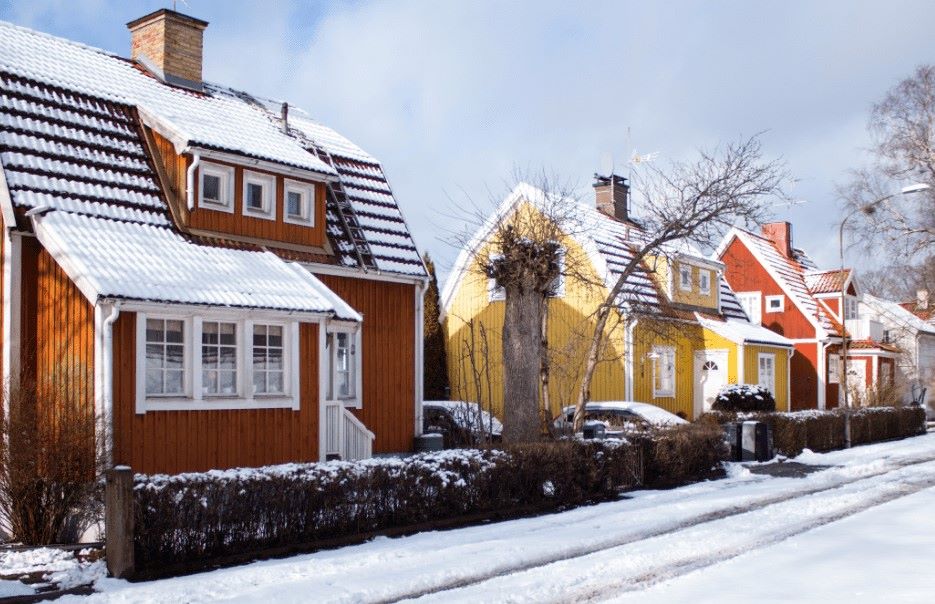
“An ounce of prevention is worth a pound of cure,” said Ben Franklin. And oh was he right!
As an insurance agent, of course, my job entails helping customers who call in with a problem and need to file a claim. But, the other part of my job is helping my customers prepare for what might go wrong – to help them prevent claims from ever happening.
We’re all grateful that insurance is there when we most need it, but we need to keep in mind that filing a claim can lead to higher premium rates in the future.
If you have to file a high-cost claim, you should expect that your homeowner insurance premium will go up.
So, to keep your rates low, I encourage my customers to start with prevention.
As I was thinking ahead toward the upcoming winter months, I wanted to share with you some of the more common claims that come across my desk at Baily Insurance Agency.
The colder weather has the potential to cause damage to our homes if we don’t prepare for it. So to help you prepare for the freezing temperatures, snow, and ice, here are some tips to prevent the top 5 winter homeowner insurance claims. We’ll talk about:
- Frozen pipes
- Damaged gutters
- Outdoor water spout damage
- Chimney fires
- Slippery sidewalks and driveways
1. Frozen Pipes
Everyone dreads when the weatherman tells us it’s going to be zero degree weather. But the biggest complainers, sometimes, are the pipes that rest in our outer walls. With such bitter temperatures, those pipes can freeze and ultimately burst.
Frozen pipes, once thawed, can lead to water damage in your walls, ceilings, and basement. And, while you wait for repairs, you’ll have to turn off the water that goes through those pipes.
What an inconvenience!
So, what can you do to limit the potential for frozen pipes?
1. Keep a slow drip.
Before you go to bed, leave the water running at a slow drip in your sinks. This slow drip will keep enough water moving through your pipes to prevent them from freezing.
2. Open cabinet doors.
Open your kitchen and bathroom cabinet doors to keep the air circulating around your pipes.
3. Close the garage.
If supply lines run through your garage or in the walls of your garage, keeping the doors closed will protect those vulnerable pipes from the freezing temperatures.
4. Leave your interior doors open.
Don’t close the bathroom or kitchen doors overnight. Keep the house at a consistent temperature and keep those doors open to help warm up your pipes.
5. Keep a consistent temperature.
Even if you are going out of town, make sure you keep your home at a consistent temperature. This is very important to keep pipes from freezing.
6. Seal your house.
Seal up cracks that let in cold air along with any crawl spaces. Not only will this benefit your pipes, but it will also help you lower your energy bills and keep the heat in your house.
7. Insulate your pipes.
This is the best way to protect your pipes. While it takes forethought, taking some weekend time to insulate your pipes with specially designed pipe insulation is the best way to prevent frozen pipes. If you’re in a pinch, however, newspaper and duct tape can serve as a temporary solution.
2. Damaged gutters
Fall is so lovely with all of the beautiful leaves falling on the ground – all the reds, yellows, and oranges. But those lovely leaves don’t just fall on the ground. They often clog up our gutters.
When leaves and other debris sit in our gutters, causing water to get trapped and then freeze. The gutters often get extremely heavy and will fall away from our house causing extra damage to siding, outside walls, and our roofs.
1. Clean out your gutters.
To prevent gutter damage, schedule a Saturday afternoon to clear all of your gutters of leaves and debris. This will ensure that the water can flow unhindered through your gutters and prevent freezing and the damage that often goes with it.
2. Insulate your attic.
One other suggestion for keeping your gutters working properly in the winter is insulating your attic. By insulating your attic, you can prevent snow and ice runoff into your gutters.
If snow and ice from your roof melt and run into your gutters, you could potentially have that water freeze in your gutters leading to damage.
3. Outdoor water spout damage
One of the easiest ways to prevent a winter claim is by shutting off all of the water to your exterior water spigots. Anyplace you hook up a hose needs to be turned off in the winter.
To turn your water off, you need to begin by detaching all hoses from your exterior spigots. Then, find the turnoff valves in your basement that run to those exterior spigots. After turning those valves off, you will want to return outside and open your exterior spigots. This will allow any leftover water in the line to drain out.
If you neglect to turn this water off, your spigots and pipes can freeze and will need replacing the following spring. Also, before you realize there has been a problem, water that leaks from those spigots and pipes may end up causing other damage to your home.
You can also purchase spigot covers for your exterior hookups. These covers cost anywhere from $5.00 to $15.00. A 4 pack of covers can be purchased on Amazon for just over $12.00.
4. Chimney Fires
There are more than 25,000 chimney fires in the U.S. every year! If you run your fireplace, that’s a terrifying statistic!
Here are tips to keep this from becoming your insurance claim!
1. Burn seasoned wood.
Wet wood causes creosote to build up. So, burn wood that has dried for at least 6 months and has a moisture content of less than 20%. To determine the moisture content of your wood, you can use a meter like this one available at Amazon. These meters can also be found at some hardware stores.
2. Schedule an inspection and chimney sweep.
Have a chimney sweep inspect your fireplace before you use it so that you can deal with any improper ventilation issues and damage that may need to be repaired. Your chimney sweep will also clean your chimney and remove any built-up creosote. When creosote builds up in your chimney, it can catch fire, setting the whole chimney ablaze.
3. Install a chimney cap.
A chimney cap will prevent debris like leaves or critters from entering your chimney. Leaves and animal nests can easily fuel a chimney fire. A chimney cap will cost between $50 and $500 depending on the materials and craftsmanship.
5. Slippery sidewalks and driveways
Two of the biggest hazards in a northern winter are ice and snow. Not only do they make driving more treacherous, but they also cause lots of accidents for those walking on sidewalks and driveways.
Depending on your state and/or local laws, as a homeowner and often as a renter, you may be responsible for your sidewalk and driveway. That means that you can be liable if anyone suffers a fall on your sidewalk or driveway – that’s right anyone – the UPS man, your neighbor Joe, or Great-Aunt Sally.
If they fall because you have snow or ice on your driveway or sidewalk, they can file a claim against your homeowner or renter’s insurance policy.
To prevent such an accident, make sure you sweep or shovel all snow off of your sidewalk and driveway. You will also need to salt those surfaces to melt any water and prevent ice from forming.
At my house, we simply keep a small bucket of salt on our porch with a little cup in it to quickly treat our sidewalk and driveway. It only takes a few minutes and can prevent a serious claim from occurring!
What should I do if I need to report a claim?
If you have an unfortunate event that you need to report to on your homeowner policy, here is a step-by-step guide to help you:
- Don’t panic! Remember this is why you have insurance! Your agent will be happy to assist you!
- Call your agent. While some insurance companies will deal directly with their customers, most prefer that you call your agent to report a claim. Soon after, the insurance company will send a claims representative out to inspect the damage.
- Take photos of the damage. After reporting the damage, take photographs of the damage. This can give your insurance company an accurate account of what the damage was like when it initially occurred. You should take the photos before attempting to make any repairs.
- Make a temporary repair. If your claim results in damage to your home, make temporary repairs to prevent further damage. For instance, if your gutter pulls away from your house, wire it back into place to keep it from pulling siding off of your house. Or, if it pulled off siding, cover any spots with plastic where water might leak into your home causing more damage.
- Save all receipts. If you made temporary repairs that required purchasing supplies, save all of your receipts. You can turn those receipts in as part of your claim and receive your money back.
To learn more about your Homeowner Insurance coverage…
Prevention is just one of the many ways to keep your insurance rates low. At Baily Insurance, we are committed to helping our clients get the best coverage available at the best price.
We are also committed to educating our clients so they better understand the complicated world of insurance. Because the language of insurance can be complicated, our customers often have questions about their insurance policies.
And, we want you to be educated about your policy covers and even more importantly what is NOT covered.
Worse than having to file a claim is filing a claim only to have it denied because you were not actually covered!
To shed some light on what is and what is not covered on your homeowner policy, we have another article that outlines some of the common coverage issues we see at Baily Insurance Agency.
This article, What Does Homeowner Insurance Cover? Most Popular Questions Answered, will start you down the path of better understanding what’s covered (and NOT covered) in your homeowner policy!

